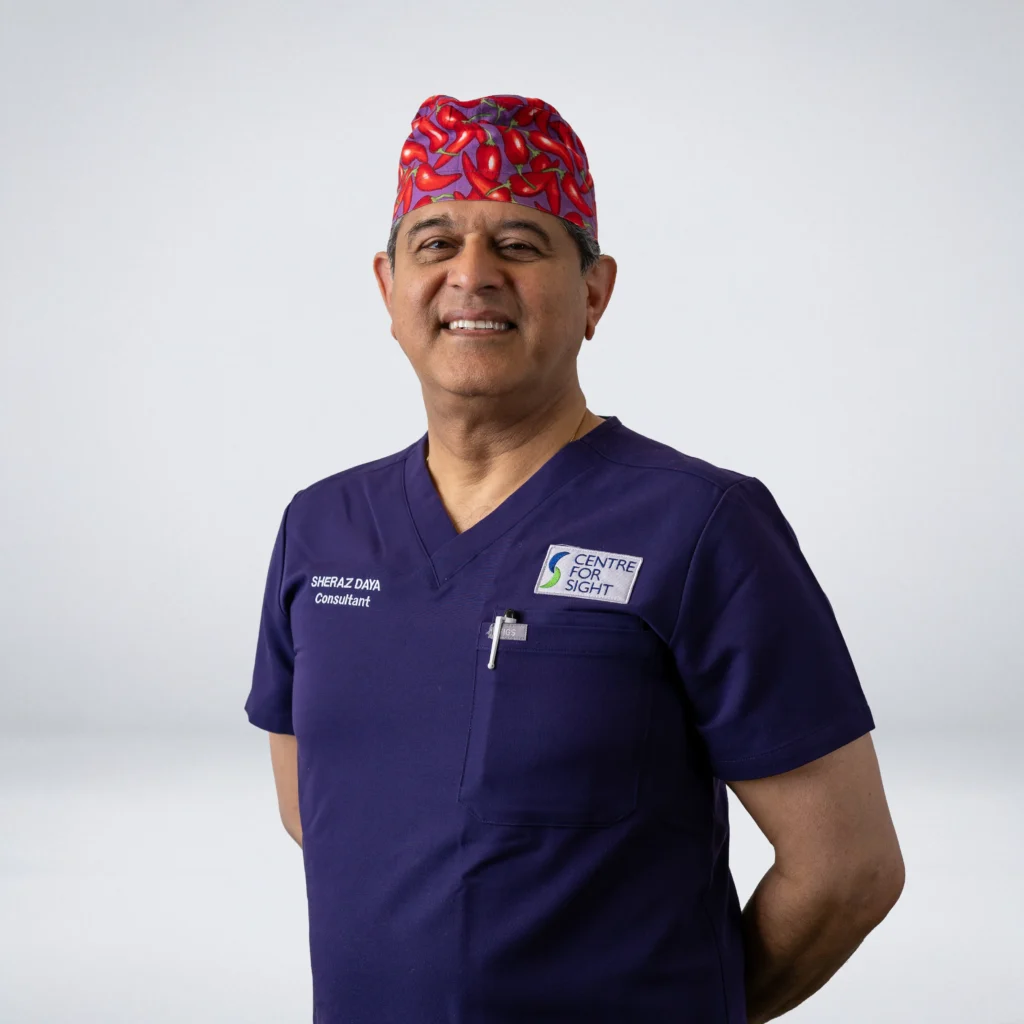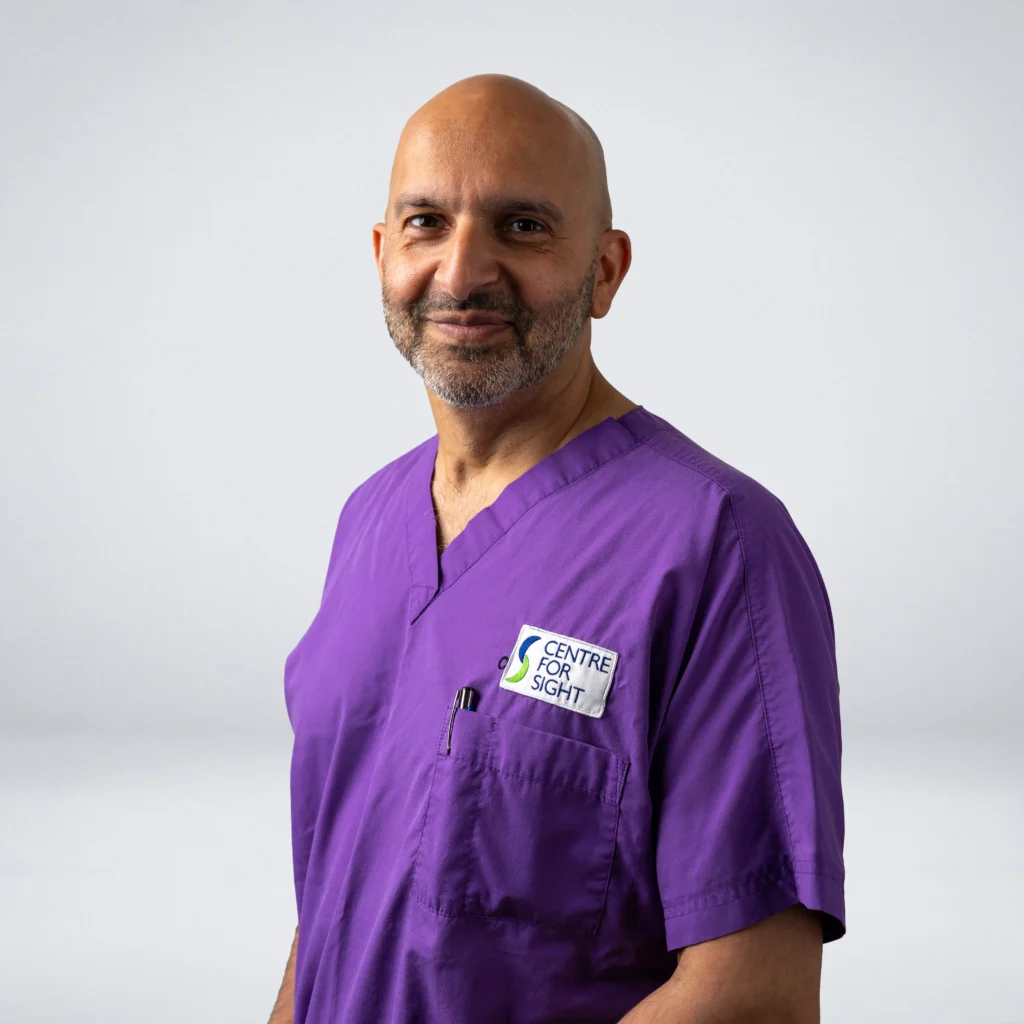- Treatments offered: LASIK, LASEK/PRK, Supracor LASIK (for presbyopia).
- Finance: Transparent prices; 0% options available (via partner finance).
- Locations: London, Sussex, Surrey.
- Why Choose: UK’s longest provider of LASIK Laser Vision Correction.
Laser eye surgery reshapes the cornea using precise laser technology to help correct vision problems like nearsightedness, farsightedness, and astigmatism. By adjusting how light enters the eye, this procedure helps to improve focus on the retina, allowing you to experience clearer and sharper vision without relying on glasses or contacts.
Different techniques (LASIK, LASEK/PRK, Supracor) suit different prescriptions and corneas.
Safest, precise vision-correction with longest track record; Centre for Sight has offered LASIK since 2004.
Surface procedure (no corneal flap); often recommended for thin/irregular corneas or certain lifestyles.
Targets near, intermediate and distance vision to reduce dependence on reading glasses.
Please be aware that your consultant will recommend the most suitable vision correction procedure to suit your eyes and lifestyle.
| Procedure | How it works | Best for | Pros | Cons |
|---|---|---|---|---|
| LASIK | Flap created with femtosecond laser; excimer reshapes stroma | Broad range of prescriptions with suitable corneal thickness | Rapid visual recovery; long track record | Requires flap (not ideal for some contact sports/very thin corneas) |
| LASEK/PRK | Surface epithelium loosened/replaced; laser reshapes beneath | Thin/irregular corneas; high-impact activities; dry-eye risk | No flap; suitable when LASIK isn’t | Slower recovery; initial discomfort; bandage lens for days |
| Supracor LASIK | LASIK profile tailored for presbyopia | Age-related near-vision loss (reading glasses) | Improves near/intermediate and distance | Typically one eye treated; nuanced visual adaptation |
To be considered suitable, you will generally need to meet the following criteria:
Laser eye surgery may not be suitable for:
Every eye is unique and so a detailed consultation at Centre for Sight will confirm whether laser eye surgery is the safest and most effective option for you.
Your surgeon will speak with you about the benefits and risks involved before your procedure.
| Benefits (vary by procedure): | Risks/side effects (not exhaustive): |
|---|---|
| Freedom from glasses/contacts | Temporary discomfort/dryness |
| Rapid recovery with LASIK | Glare/halos (usually transient) |
| Options for thin corneas (LASEK/PRK) | Slower recovery and early discomfort with LASEK/PRK |
| Near-vision enhancement for presbyopia (Supracor) | Enhancement procedures occasionally required |
Fill out our form below and our enquiry team will be delighted to help you on the first stage of your journey to clearer vision.
Before any treatment is planned, a full set of diagnostic tests is undertaken. This includes up to 16 diagnostic tests, providing your consultant with a detailed analysis of your eye health.
After diagnostics, you will meet with your surgeon who will discuss the test results and the best option for you, whether that is LASIK, LASEK/PRK, Supractor or another more suitable treatment. All the benefits, risks and alternatives will be explained before you decide to proceed.
Once you have selected and consented to a procedure, your surgery is scheduled. Centre for Sight performs LASIK, laser lens replacement, and other refractive procedures at our dedicated eye care hospitals in Surrey or Sussex.
Transparent, fixed prices (no hidden extras):
0% Finance examples (illustrative):
Suitability depends on prescription stability, corneal thickness/shapeand eye health. A full consultation with scans confirms candidacy.
Often for thin or irregular corneas, certain high-impact activities, or when dry-eye risk is a concern. Recovery is slower than LASIK.
Most patients experience minimal discomfort, as numbing drops are used. Some report mild sensitivity post-surgery, which fades quickly.
Read the full blog post.
While everyone’s experience varies, most patients notice significant improvement within 24-48 hours and can return to regular activities soon after.
After 2 weeks, you can typically return to moderate-intensity exercise. Please seek the advice of your surgeon for high-impact or contact sports.
A LASIK profile for presbyopia designed to improve near and intermediate vision (often one eye).
Yes, credit plans up to 24 months interest-free are available via a NovunaFinance(subject to status).
You can usually be seen promptly. Once you complete the suitability quiz or contact us, our team will arrange a consultation at one of our clinics (London, Surreyor Sussex). After diagnostic tests and confirmation of suitability, treatment can often be scheduled within weeks, depending on your availability and clinic schedules.
Yes. Centre for Sight’s transparent pricing includes a full aftercare package: 24-hour emergency access and all scheduled follow-up appointments for one year. This ensures yourhealing and visual outcome are closely monitoredwithout extra cost.
Prices are transparent and fixed, there are no hidden extras or “time-limited discounts.” This means everyone pays the same, fair fee. Instead of discounts, Centre for Sight offers 0% finance options, allowing you to spread the cost of surgery over affordable monthly payments.
Look for an experienced consultant ophthalmic surgeon with recognised qualifications (e.g., FRCOphth), a strong track recordin refractive surgery, and published outcomes. Centre for Sight surgeons are consultant ophthalmologists with subspecialist expertise, audited results, and decades of combined experience. You can review consultant profiles on the website before booking.








